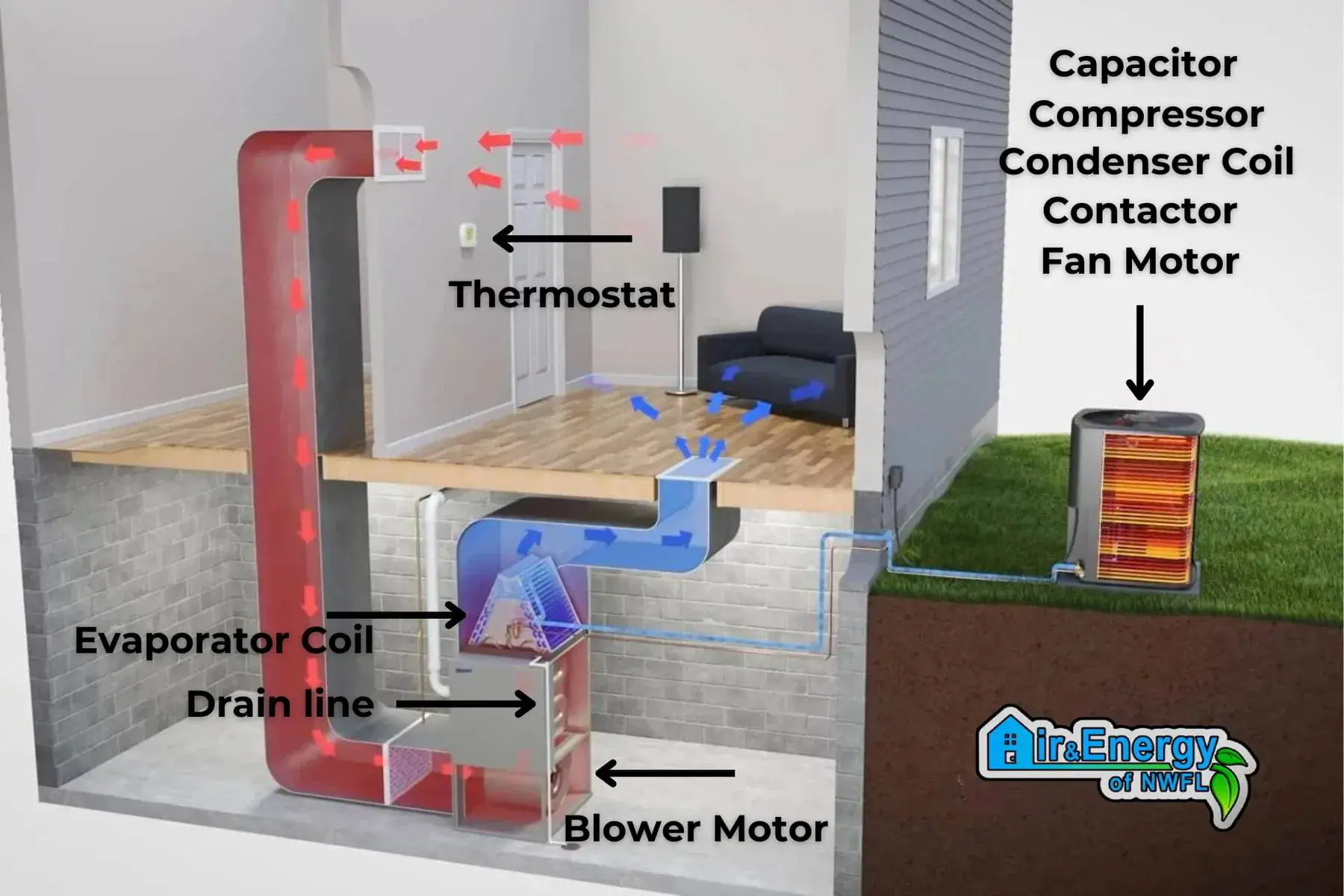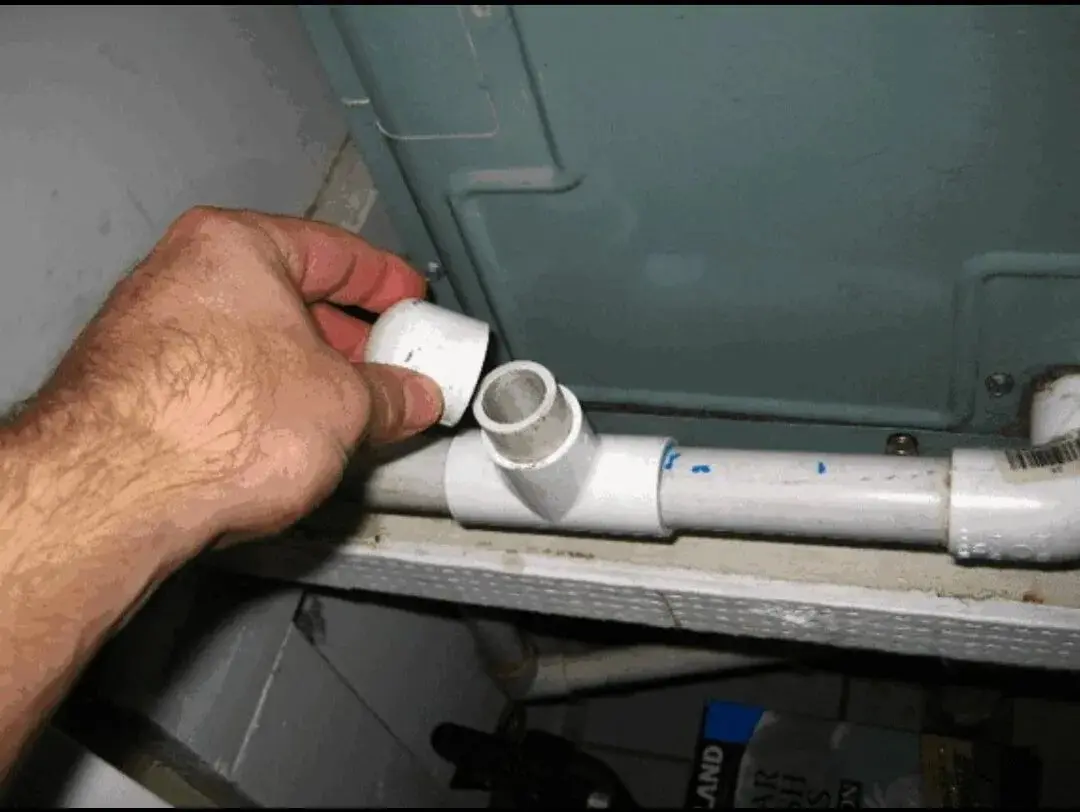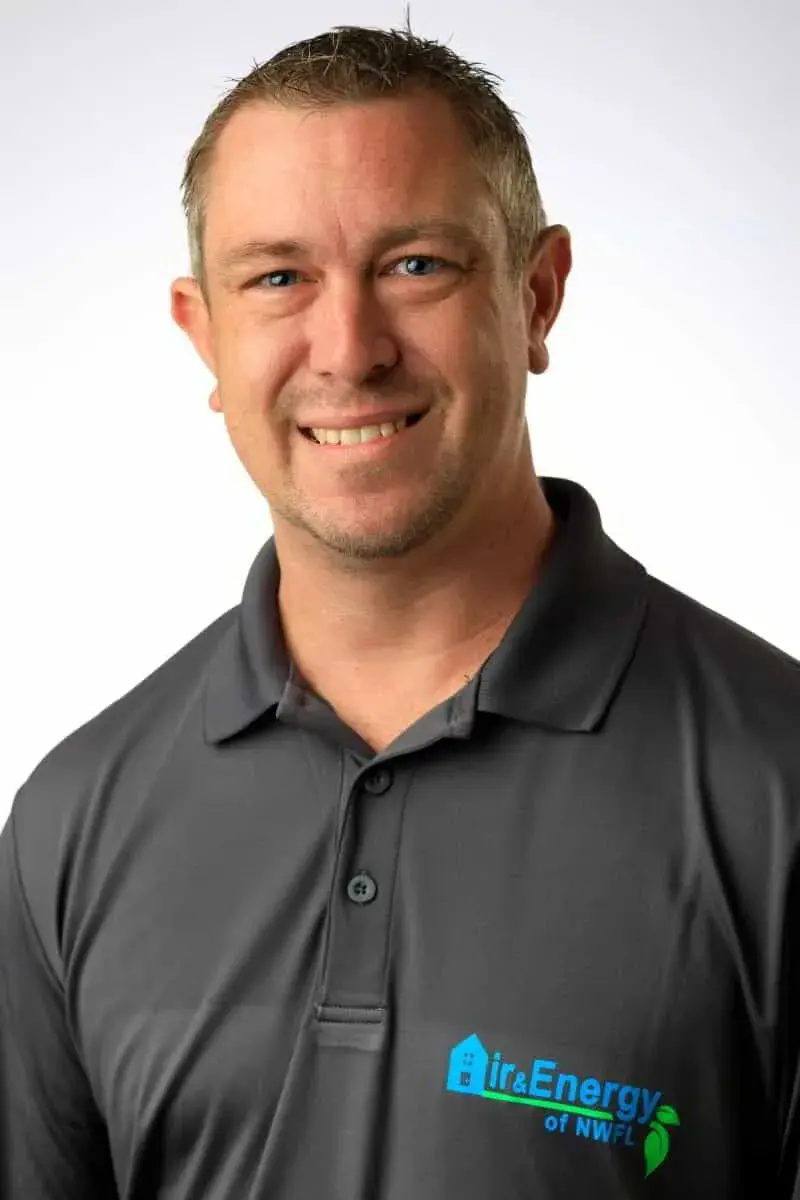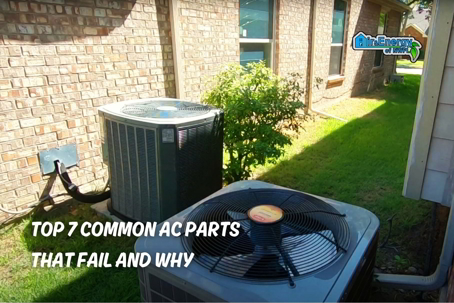Hey neighbors! Is your AC not keeping up with the heat? Let’s take a closer look at the top 7 common AC parts that fail—the real culprits behind many cooling system breakdowns.
By understanding these key components, you’ll learn to spot early warning signs, save on repairs, and keep your home comfortable year-round. Stick around to discover what makes your AC tick and how to keep it running smoothly.
✅ PRO TIP: Though Florida’s heat puts extra strain on AC components, homeowners in cooler or drier regions may still encounter similar failures—just under different conditions. Adjust these maintenance tips based on local climate and usage.
Key Takeaways
- Top AC Parts That Fail: Commonly failing parts include the capacitor, compressor, evaporator coil, condenser coil, fan motor, contactor, and thermostat.
- Warning Signs to Watch For: Buzzing noises, weak airflow, warm air, or unresponsive systems can indicate failing components.
- Preventive Maintenance Matters: Regularly change filters, clean coils, and schedule annual tune-ups to catch issues early.
- When to Call a Pro: Repairs involving electrical components, refrigerant, or major parts like compressors are best left to professionals.
- Cost Overview: Replacement costs vary by part, ranging from $100 for minor fixes to $1,000+ for major components like compressors.
Why Do AC Parts Fail?
In Florida’s blazing heat, skipping filter changes or letting coils clog spells trouble for failing AC components. Over time, everything from fan motors to capacitors can wear down. Electrical glitches, loose connections, and low refrigerant only add to the chaos.
Common air conditioner problems like water leaks and electrical control failures can further complicate matters. Luckily, most breakdowns are preventable. Maintaining the air conditioning system is crucial; keep filters fresh and ensure adequate refrigerant levels to avoid decreased efficiency.
Check for odd noises and schedule seasonal tune-ups to spot issues early. With some foresight and these HVAC troubleshooting tips, you’ll catch problems before they snowball. Routine check-ups go a long way in preserving system efficiency and comfort. A little TLC now means fewer headaches later.
Top 7 Common AC Problems That Cause Parts to Fail

1. Capacitor
- What Does a Capacitor Do? A capacitor supplies the burst of electricity that gets your AC’s motors running, similar to a starter for your car. The condenser fan motor, working alongside the capacitor, plays a crucial role in the overall functionality of the HVAC system.
- Why It’s the First Part to Fail: Florida humidity and constant cycling weaken capacitors over time, leading to frequent breakdowns.
- Signs of AC Capacitor: Failure Listen for buzzing noises, watch for a fan that won’t spin, or notice the unit struggling to start. A swollen or leaking capacitor is another telltale sign.
- Replacement Costs: Professional replacement typically runs between $100–$250 and can be done quickly—catching early warning signs saves bigger repair bills down the road.
2. Compressor Failure
- What Does a Compressor Do? The air conditioner's compressor pumps refrigerant through your AC system, essentially acting as the “heart” of cooling. It also plays a crucial role in outdoor water leaks and ensuring efficient heat transfer through the AC fan.
- Why It Fails Often: High pressures, electrical overloads, and Florida’s intense heat can strain the compressor, making it prone to wear. Maintaining a proper amount of refrigerant is essential. If an air conditioner requires refrigerant annually, it likely indicates a leak that needs to be repaired to ensure optimal performance.
- Signs of Compressor: Failure Watch for warm air instead of cool, loud clunking noises, or circuit breaker trips. These red flags usually point to deeper mechanical issues.
- Replacement Costs: Compressor repairs or replacements can cost $1,000 or more. Professional help is essential for this major component.
3. Evaporator Coil
- What Does an Evaporator Coil Do? This coil absorbs heat from your indoor air, helping produce the cool air you feel at the vents.
- Why It Fails Often: Dirt buildup, refrigerant leaks, and corrosion wear down the coil over time—especially in humid climates like Florida.
- Signs of Evaporator Coil Failure: Watch for ice forming on the coil, weak airflow, or a sudden drop in cooling performance. A musty smell can also signal trouble. A refrigerant leak can prevent the air conditioner from blowing cold air, leading to inefficient cooling.
- Replacement Costs: Evaporator coil replacement can range from $600 to $1,200+, depending on size and brand. Proper maintenance and regular cleanings can help extend coil life.
4. Condenser Coil
- What Does a Condenser Coil Do? The condenser coil removes heat from the refrigerant by releasing it outdoors, allowing cool air to circulate indoors. An AC refrigerant leak can significantly impact the condenser coil's efficiency, leading to temperature variations and reduced system performance. Regular inspections are crucial to detect and address refrigerant leaks promptly.
- Why It Fails Often: Constant exposure to the elements—salt air, debris, and Florida heat—can cause corrosion or blockages, reducing efficiency.
- Signs of Condenser Coil Failure: Watch for longer cooling cycles, higher energy bills, or physical damage to the coil. If warm air blows from your vents despite the AC running, the condenser coil could be failing.
- Replacement Costs: Depending on unit size and brand, condenser coil replacements can run $600 to $2,000+. Regular cleanings protect your investment.
5. Fan Motor
- What Does a Fan Motor Do? The fan motor drives airflow across the coils, either pushing heat outside (condenser fan) or circulating cool air inside (blower motor).
- Why It Fails Often: Daily high demand in hot climates, dust accumulation, and low lubrication can stress the motor, causing it to overheat or seize. Proper maintenance of the AC unit, such as changing filters and handling refrigerant correctly, is crucial to prevent fan motor failures.
- Signs of Fan Motor Failure: Listen for a humming or grinding noise, notice if the fan spins slowly or stops altogether, and watch for airflow issues.
- Replacement Costs: Fan motor replacements often run between $200 and $700, depending on motor type and labor. Regular cleaning and annual check-ups can keep it spinning strong.
6. Contactor / Relay
- What Does a Contactor/Relay Do? The contactor (or relay) acts like an electrical switch that powers the compressor and fan, allowing your AC to cycle on and off.
- Why It Fails Often: Frequent starts, electrical surges, and Florida humidity can cause the contactor’s internal contacts to corrode or fuse.
- Signs of Contactor Failure: Listen for clicking sounds or a system that struggles to turn on. If you hear the compressor trying to engage repeatedly without success, the contactor may be the culprit.
- Replacement Costs: Typically $100–$300 for parts and labor. Routine tune-ups can catch a worn relay early, preventing larger failures.
7. Thermostat
What Does a Thermostat Do? Your thermostat controls temperature settings and cycles the AC on and off based on indoor comfort.
- Why It Fails Often: Worn-out sensors, old wiring, or software glitches in smart models can cause inaccuracy or sudden malfunctions.
- Signs of Thermostat Failure: Look for unresponsive screens, erratic temperature swings, or an AC system that never seems to cycle correctly. Sometimes a simple battery swap fixes minor issues.
- Replacement Costs: Depending on whether you go basic or smart, thermostat replacements range from $50 to $400+. Installing a quality thermostat can help optimize efficiency and quickly solve AC cycling problems.
Preventive Maintenance & Avoiding Premature Part Failure

Staying ahead of AC failures isn’t rocket science. Regular maintenance of your air conditioning unit is crucial. Swap filters monthly, schedule coil cleanings, and book annual tune-ups. Take a quick peek at your capacitor each month—bulges or leaks are early red flags.
Keep an eye out for dripping refrigerant lines or unusual sounds, as these HVAC troubleshooting tips can spot small problems before they escalate. A clogged condensate drain line can lead to indoor water leaks, so regular maintenance is essential to prevent blockages and potential damage to your home.
Here’s a breakdown:
- DIY Tasks: Regularly change air filters, gently dust coils, and check your thermostat for proper settings or battery issues. Clean the condensate drain line to prevent blockages and avoid water leaks—use a small brush or vinegar solution for simple upkeep.
- Pro-Only Tasks: Leave electrical testing and capacitor replacements to licensed professionals to ensure safety and accuracy. Handle only refrigerant repairs and major component replacements, like compressors or coils, with certified expertise.
A dirty air filter can block airflow and reduce cooling capacity, leading to system inefficiencies. Regularly changing the filter is key to maintaining optimal performance. Maintaining the drain line is important to prevent water leaks and mold development.
Clean air filters are essential for maximizing airflow and enhancing indoor air quality. This is especially important for homes with pets, and professional services can help address air quality issues.
Conclusion
Knowing the top 7 common AC parts that fail helps you catch problems before they spiral into major repairs. Each component—from the capacitor to the thermostat—plays a role in keeping your home cool and comfortable. Addressing issues early saves money, prolongs system life, and prevents sweaty Florida afternoons without AC.
Need a helping hand? Contact Air & Energy of NWFL for a friendly, no-obligation inspection or quote. We’ll fix any trouble spots quickly so that you can enjoy worry-free cooling all season long. Reach out today and keep your AC in peak condition year-round!

This article was written by:
Co-founder and Home Comfort Specialist

